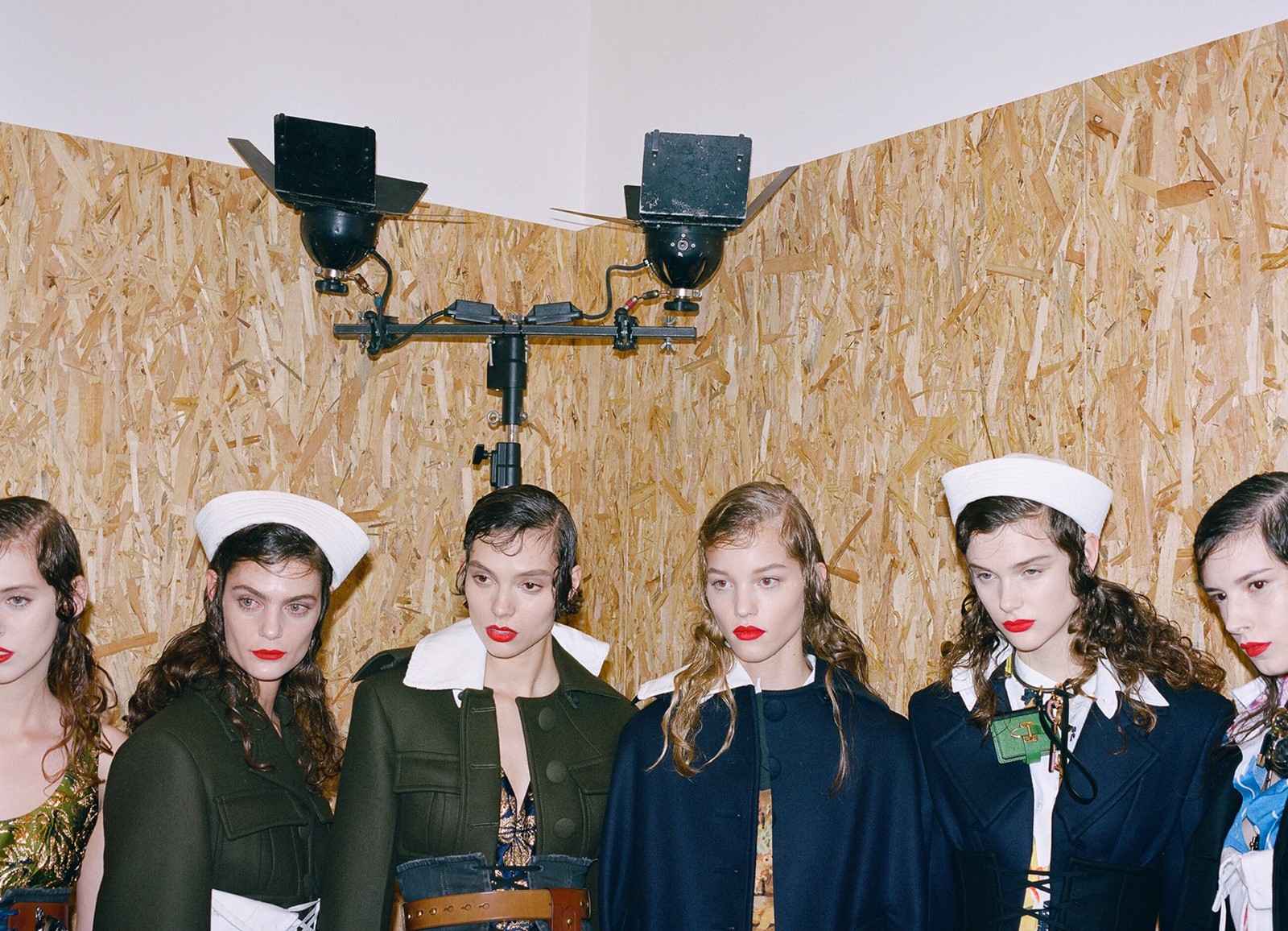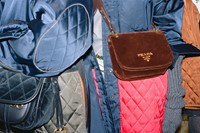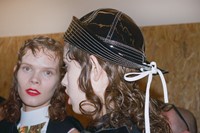Fashion is fragmented right now. In an over-saturated market, the industry is struggling to make sense of itself. The battle between consumer-facing shows and, in the opposite corner, collections which at least some very big names claim are more spontaneously creative, continues to rage. There’s no arguing with concerns over the economy, meanwhile. Or indeed with war, the threat of terrorism and an ever-increasing migrant population… All of this threatens to make propositions of what we choose to wear – or indeed not to wear – appear superficial to the point of insensitive or, worse, irrelevant. It’s small wonder, then, that nerves are frayed.
For the most part, exploring such issues on a runway is a dangerous business. Fashion is fashion and even the industry’s finest minds would do well to steer well away from more serious subject matter, safe in the knowledge that they may all too easily appear crass. Then there’s Miuccia Prada who, in a season where beautiful chaos appears to be the over-riding story, produced her most powerful – and indeed brave – collection for a long time. Given that for years hers has justifiably been among the most anticipated – if not the most anticipated – show on the schedule, that’s saying something. Fashion may be fragmented, but the woman behind this fêted Italian name has never personally seemed so clear-sighted and this despite the fact that the company that bears her name, like so many others, is facing unstable times. And this was an extremely personal collection. So personal, in fact, and so obviously heartfelt, that its creator felt free to go where lesser designers would fear to tread.
A History of Women
“It was about the history of women,” she said once the requisite throng of journalists who fight over her studiously elliptical backstage soundbites had departed to write their reviews, and as if that were the most effortless thing in the world. In fact, it is a monumental subject of its own. The furore backstage at Prada, where writers form what might best be described as a scrum around the designer to ensure that they don’t miss a word, is famous now. And that is not surprising. For all the elusive and at times even gnomic nature of her commentary, her intelligence, wit and mischievous charm is extremely appealing – not to mention rare.
In fact, she began her hugely emotive – and just huge - exploration of the past in January, during the men’s shows. That time too she worked in collaboration with the artist Christophe Chemin who designed the evocative prints for both collections. Miuccia Prada found the former process “intriguing”, she said, but this one even more so. “Women have more facets. We are so much more complex. We are lovers, mothers, workers… We have to be beautiful...” Making such sweeping statements to AnOther along with two other writers (male) as one of them was quick to point out was characteristically provocative: she turned to me (female) with a wry smile.

Beautiful Heartbreak
Prada described the characters that walked her plywood runway as “vagabonds”, roaming through different phases of life and referencing the French Revolution, the Italian Renaissance, the 1940s and her favourite 1950s silhouette: “Happy and sad. Sex, pain, poor, rich, power, regality, unity… There are so many different possibilities,” she said. Frédéric Sanchez’s soundtrack neatly nailed the mood: PJ Harvey, Nico, Edith Piaf. “I find Edith Piaf so beautiful – heartbreaking,” Prada said.
Is it possible to express such universal ideas in clothing? Contrary to what might be expected, and testimony to the extraordinary mind of the designer, the answer in this instance was a resounding yes. Chemin’s prints worked hard for her. They were based on the names of the twelve months of the French republican calendar, used by that country’s government for 12 years, from late 1792 to 1805, and designed to negate religious and royalist connotations. These were all feminine and focused on weather patterns, among them were Germinal, Floreal, Messidor, Thermidor, Fructidor… The words themselves appeared printed large across heavy satins and alongside, among other things, ripened fruit, the embracing lovers recycled from menswear, and the serenely open face of what looked like a Madonna from an Old Masters painting: the archetypal matriarch.
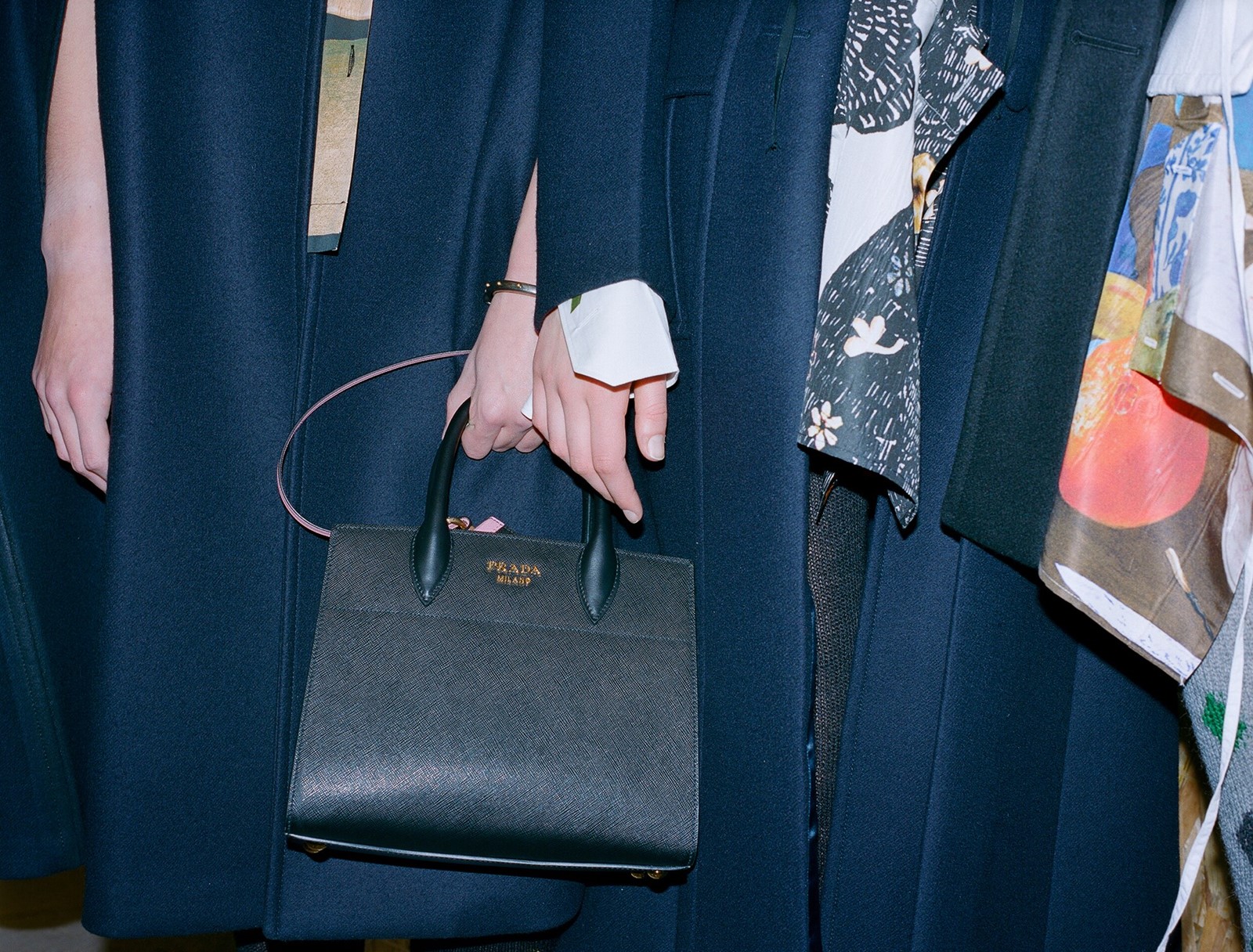
The Humble and the Haute
The mix of the humble and the haute that is very much part of this designer’s vocabulary was here. Magnificent gold brocades had washed white denim collars and were cinched at the waist with laced corsetry in that same fabric and half undone. The very same coats came next in military green canvas and heavy wools. The Prada customer may appear as opulent (rich?) or understated (poor?) as she chooses for the coming autumn. Patchworked knits in sludgy shades had sumptuous fur backs or sleeves with richly coloured, printed silk linings. Boxy jackets, made hourglass with more denim corsetry, in navy and olive with utilitarian patch pockets were worn over heavy satin circle skirts. Such sturdy looks came thick and fast, contrasted with more obviously pretty – read feminine – organza dresses embroidered in a palette of spun sugar, primrose and apple green. The sailor hats that topped off several exits were inspired by a design she saw someone wearing this summer, Miuccia Prada said. “I like them. And they’re romantic.” And so they were. The romance of travel to far-flung climes needs no explaining.
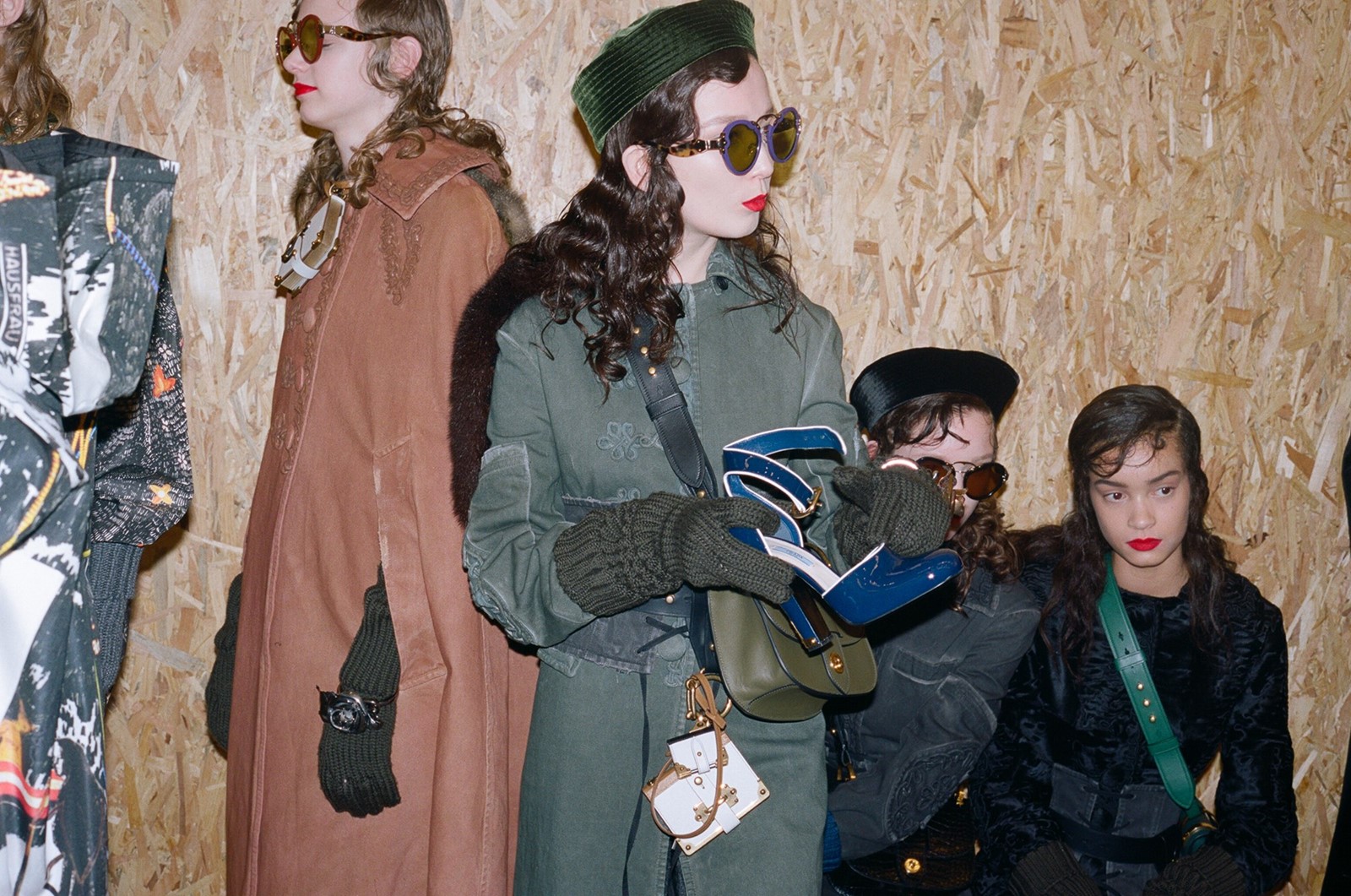
More accessories – and they were loaded onto looks as Prada’s lovely troupe of wanderers wound their way around the set – were equally tender in intent. Tiny diaries were worn around their necks. “Apart from letters, I’ve never written a word,” their creator laughed. Bags were finished with multiple brass rings: their owners are encouraged to attach trinkets to them. Footwear was typically disorienting – strangely lovely. The wedge heels of sandals were encrusted with curlicues of gold; heavy walking boots, trimmed with fur.
This was an extraordinary collection: at once thought-provoking, empowering and moving. Its eclectic mix might help both the woman behind it and indeed the rest of we mere mortals “understand where we are,” the designer said. And it’s true that the breadth of inspiration and spanning of history and continents was as fine an interpretation of contemporary existence – and women’s contemporary existence in particular – as anyone could ever wish for.
